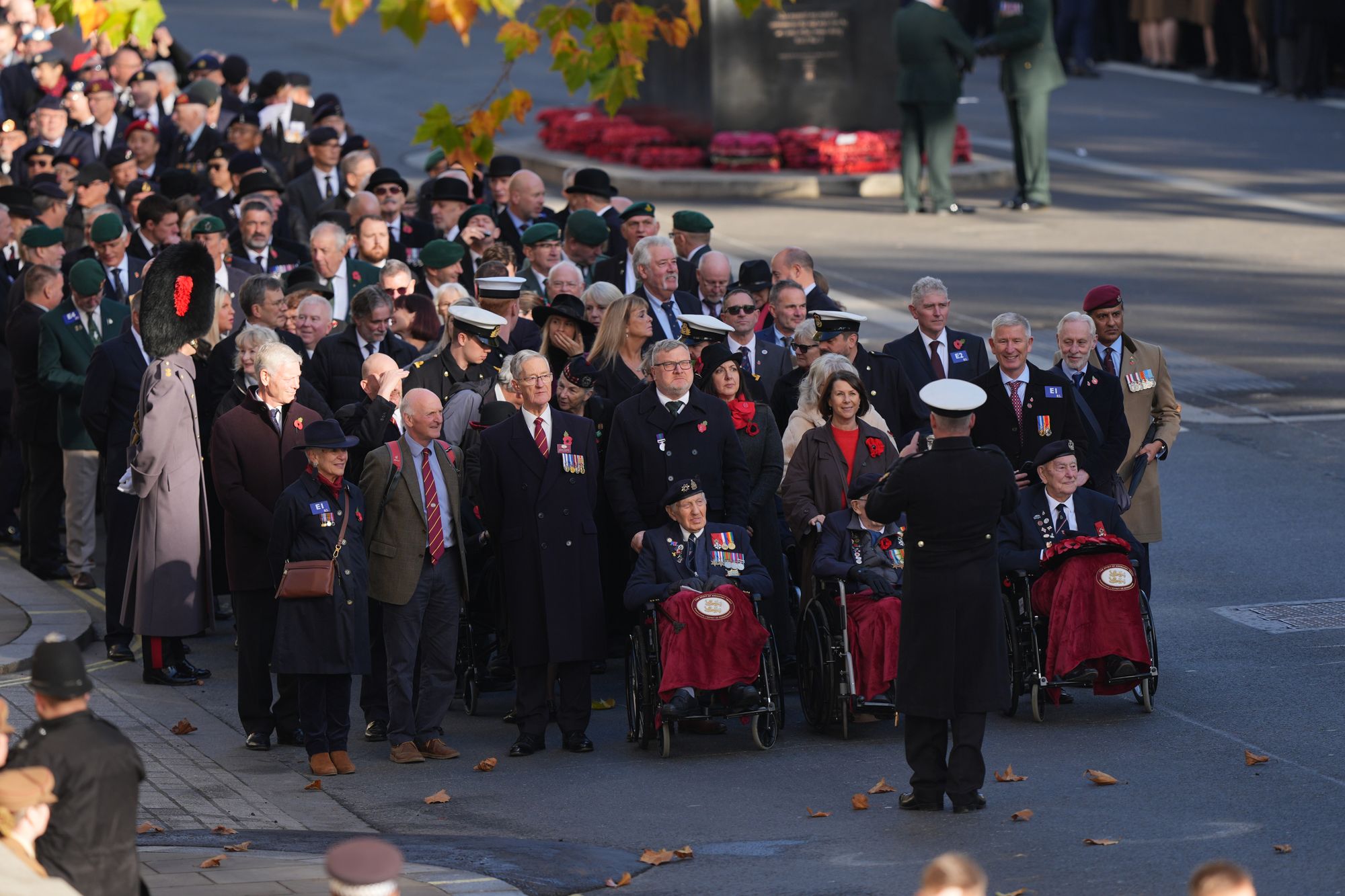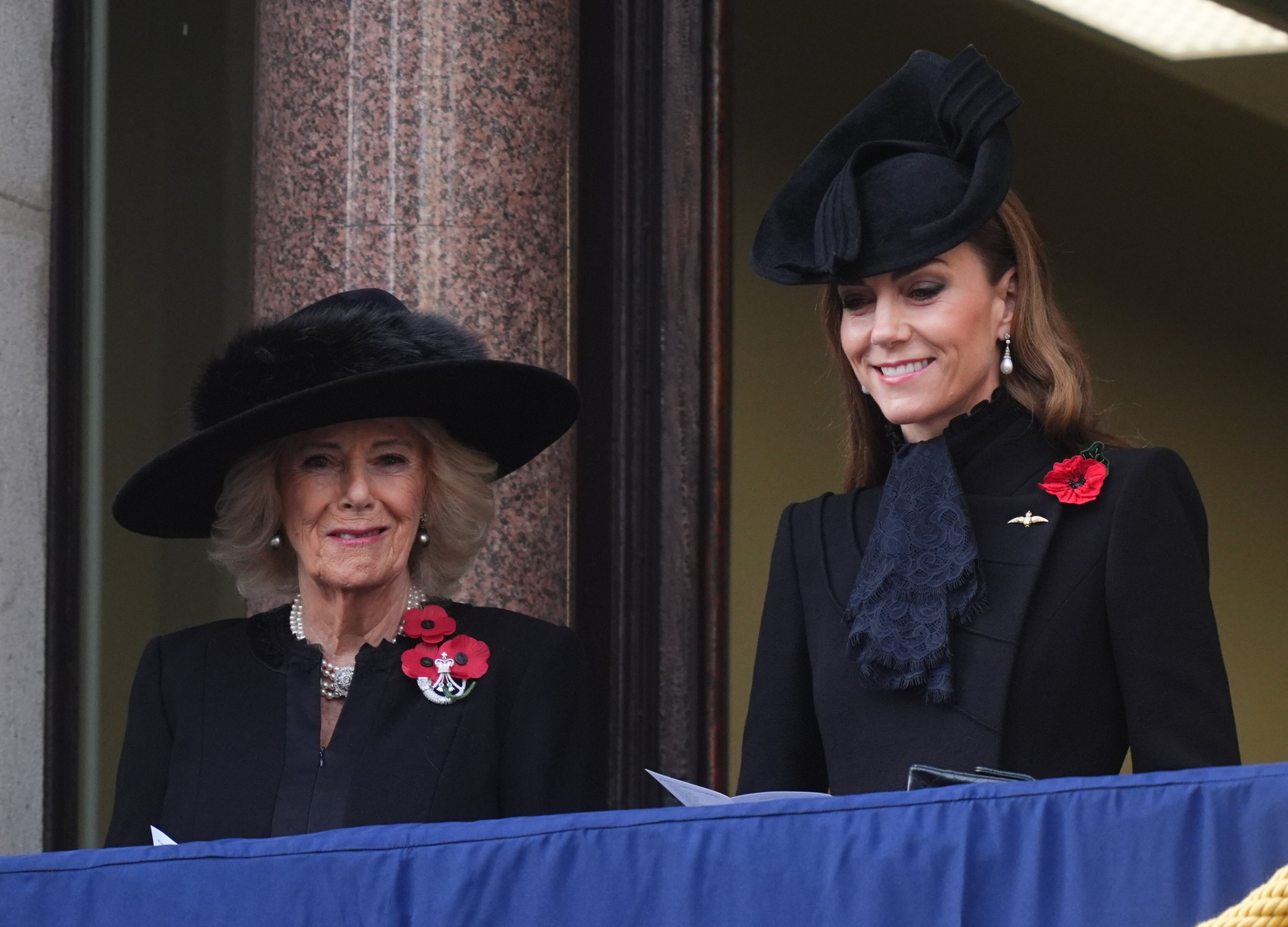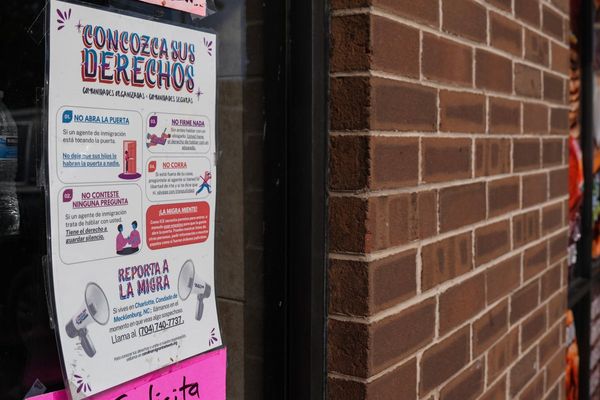King Charles has led the nation in the annual Remembrance Sunday service attended by thousands of war veterans at the Cenotaph in London.
A sea of poppies and military uniforms could be seen as hundreds of people lined Whitehall on Sunday morning, with three D-Day veterans among the Second World War personnel attending the service.
Charles laid the first wreath in recognition of the fallen from conflicts dating back to the First World War, and was followed by the Prince of Wales.
The 76-year-old monarch, wearing a field marshal uniform with a ceremonial frock coat, saluted before stepping back from the monument after leading a two-minute silence.
His son, dressed in Royal Air Force uniform in the rank of wing commander, also saluted after laying his wreath at the Cenotaph.

William, who completed seven and a half years of full-time operational military service in 2013, promotes the roles and welfare of current and former service personnel as a key part of his work.
Prime minister Sir Keir Starmer also laid a floral tribute, along with senior politicians including Conservative leader Kemi Badenoch, Lib Dem leader Sir Ed Davey, foreign secretary Yvette Cooper, home secretary Shabana Mahmood and the speaker Sir Lindsay Hoyle, as well as representatives from the Commonwealth.

The Princess of Wales and the Queen, both dressed in black, and other members of the royal family viewed the Remembrance Sunday service from a balcony at the Foreign, Commonwealth & Development Office overlooking the Cenotaph.
The pair were joined by the Duke and Duchess of Gloucester, the Duke of Kent and the Duchess of Edinburgh.

Standing close to the Cenotaph were eight former prime ministers: Sir John Major, Sir Tony Blair, Gordon Brown, Lord Cameron, Baroness May, Boris Johnson, Liz Truss and Rishi Sunak.
The Cenotaph wreath-laying ceremony was held after a two-minute silence was observed in the heart of Whitehall and at war memorials in villages, towns and cities across the country.
A gun was fired to mark the end of the silence before the “Last Post” was sounded by the buglers of the Royal Marines.

Camilla and Kate both smiled as the King departed to applause from the crowd after the national anthem was sung at the end of the ceremony.
Ahead of the service, around a dozen people wearing military uniforms and poppies were pushed in wheelchairs in Whitehall, while respectful applause rang out near the Cenotaph and one of the veterans saluted.
Three D-Day veterans were among the Second World War personnel in attendance at Whitehall.

Henry Rice, a former signalman who arrived off Juno Beach five days after D-Day, and Mervyn Kersh, who arrived in Normandy aged 19, three days after the start of the D-Day invasion, were among those in attendance on Sunday.
Sid Machin, one of the six 101-year-olds registered to march, was also present. He is one of the last surviving “Chindit” soldiers from the Second World War’s Burma campaign.
As a young man of about 19, Mr Machin landed behind enemy lines in a glider at night in the jungle, as part of a special forces unit in Burma (now Myanmar), which wreaked havoc on Japanese supply lines and infrastructure.

Some 10,000 armed forces veterans took part in the Royal British Legion’s march-past in London after the service, including about 20 Second World War veterans, 80 years on from the conflict’s end.
Crowds lining the streets of Whitehall applauded the marchers, who were accompanied by music played by the Massed Bands of the Household Division and the combined bands of the Royal Marines and Royal Air Force, with many participants wearing medals.
Some of the marchers, including several Chelsea Pensioners, were pushed in wheelchairs, while others travelled on mobility scooters.
War veterans welcome ‘comradeship and unity’ at Remembrance service
Fighting From Home sculpture honours vital Second World War workers
Remembrance Sunday marked in events across Ireland
King leads nation in honouring the country’s war dead on Remembrance Sunday
UK military to help Belgium combat suspected Russian drone flights
Inquiry launched as nearly one million young people out of work and education







